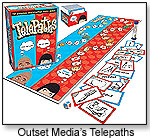
January 1, 2026


| “With a clear focus on the consumer, you should always be able to find the right answer.” — Beth Flom, Flag + Company |
 Kids are growing up faster, drastically shrinking the shelf life of toys and challenging manufacturers to create innovative items that capture interest quicker and earlier. Outsourcing and overseas production have instigated a seemingly never-ending public scrutiny of toy safety. And the proliferation of mass-market outlets as dominant retailers has put power in the hands of distributors — often forcing reduced pricing and increased negotiation.
Kids are growing up faster, drastically shrinking the shelf life of toys and challenging manufacturers to create innovative items that capture interest quicker and earlier. Outsourcing and overseas production have instigated a seemingly never-ending public scrutiny of toy safety. And the proliferation of mass-market outlets as dominant retailers has put power in the hands of distributors — often forcing reduced pricing and increased negotiation. What do you deliver every time a child plays with your doll or a teen tackles your game? What can parents count on no matter which of your products they purchase for their children? The answer is your brand promise. It’s what keeps buyers coming back.
What do you deliver every time a child plays with your doll or a teen tackles your game? What can parents count on no matter which of your products they purchase for their children? The answer is your brand promise. It’s what keeps buyers coming back.  PERCEPTION
PERCEPTION
Copyright © 2026 TDmonthly®, a division of TOYDIRECTORY.com®,
Inc.